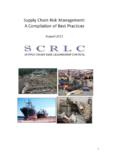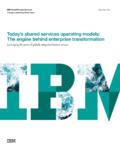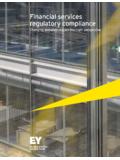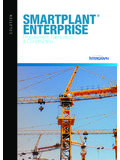Transcription of A Quantitative Study Supply Chain— Managing …
1 A M R R e s e a r c h R e p o r tJ a n u a r y 2 007by Mark Hillman and Heather KeltzAs firms race to incorporate global sourcing strategies, integrate contract manufacturing relationships, and deal with the increasing number of events that can cause Supply chain disruption, Managing risk in the Supply network is an increasingly critical Risk in the Supply Chain A Quantitative Study Copyright 2007 by AMR Research, Research is a registered trademark of AMR Research, portion of this report may be reproduced in whole or in part without the prior written permission of AMR Research. Any written materials are protected by United States copyright laws and international treaty provisions. AMR Research offers no specific guarantee regarding the accuracy or completeness of the information presented, but the professional staff of AMR Research makes every reasonable effort to present the most reliable information available to it and to meet or exceed any applicable industry standards.
2 AMR Research is not a registered investment advisor, and it is not the intent of this document to recommend specific companies for investment, acquisition, or other financial BottomLineAMR Research Report | January 20071 AMR Research, Risk in the Supply Chain A Quantitative Studyby Mark Hillman and Heather KeltzAdoption and spending on Supply chain risk management initiatives will increase sharply in 2007, driven by several key business firms race to incorporate global sourcing strategies, integrate contract manufacturing relationships, and deal with the increasing number of events that can cause Supply chain disruption, Managing risk in the Supply network is an increasingly critical capacity. At stake are billions of dollars of stock market capitalization, market share losses from failed product launches, or even the possibility of going out of business because of an inadequate understanding of the magnitude of Supply chain risks.
3 As a result, Supply chain risk management (SCRM) is emerging as a critical Supply chain management discipline. To understand the key trends and drivers of Supply chain risk, AMR Research conducted an in-depth field Study of 89 executives to discuss the evolution of SCRM (see Appendix A for our methodology). The scope of this Report is to analyze the results and findings of the field Study and discuss some of the market drivers of SCRM. It will be followed by several articles and Reports that dig into case Study examples of SCRM in practice by major corporations for risk mitigation and competitive findings SCRM is an increasingly important initiative for Supply chain and operations professionals. 46% of firms plan to implement or evaluate SCRM technology in the next 12 to 24 months.
4 Supplier failure and continuity of Supply is the No. 1 risk factor for 28% of the firms surveyed. One-third of firms say they have dedicated budget line items for SCRM activities. 54% of firms plan to increase their budgets for SCRM over the next 12 months. Of those firms, the average spending increase will be 17% year over year. The top areas of application spending to support SCRM are sales and operations planning (S&OP), inventory optimization, business intelligence/ Supply chain analytics, and Supply chain visibility/event management Research Report | January 20072 2007 AMR Research, SCRM imperativeUncertainty and risk are part of doing business. As firms move to leaner operating models and increasingly leverage global sourcing models, uncertainty in both Supply and demand is growing along with Supply chain complexity.
5 As a result, Managing risk in the Supply chain from analyzing the Supply network for vulnerability and risk exposure to ensuring Supply for new product launches is on the rise (see Table 1).Table 1: Trends driving awareness of SCRMS ource: AMR Research, 2007 Business trends and by external eventsLeaner Supply chainsEnron and Sarbanes-Oxley complianceGlobal sourcing9/11 terrorist attackHigher customer expectationsSARS and avian flu threatsComplexity and interdependency of Supply baseAsian tsunami and Hurricanes Katrina and RitaVolatility and variability of demandHigh-profile business failures and disruptionsIncreased commodity costs and tighter logistics capacityThe last several years have seen the increasing use of lean and Six Sigma approaches to reduce inventory and waste in the Supply network.
6 However, as firms increasingly want to retain cost competitiveness, global sourcing has become the norm. The increased variability because of global sourcing in the form of longer or more variable lead times, or more variable product quality, for example combined with more lean Supply chains has left many companies more exposed to Supply chain disruptions. Alternatively, it has forced them to combat variability with more inventory, negating many of the expected cost benefits of global sourcing . Understanding and Managing the portfolio of risks facing Supply networks today is critical to maximizing business Research Report | January 20073 AMR Research, defined Increasingly, AMR Research clients inquire about a range of risk and risk management issues.
7 To help clients with a framework for understanding the breadth of Supply chain risks as well as strategies to address them, we published Supply Chain Risk Management Strategies, Part 1 and Part 2. In the articles, we defined risk management and SCRM: Risk management is the process of measuring or assessing risk and then developing strategies to manage the risk. These strategies can involve the transference of risk to another party, risk avoidance or mitigation, and channel risk sharing. SCM risk assessments balance the probability of demand, the likelihood of reliable Supply , the most effective allocation of resources, the probability of success of new product introductions, market conditions, and the opportunity costs of alternative decision Ra tionalization(P rofitability Risk) Supplier Development/ Supply Base Monitoring(C apacity Risk)Re venue Management(Demand Risk)Network Design fo r Ag ility(Supplier/Logistics Risk)Co ntra ct Management(C ompliance Risk)Sales and OperationsPlanning ( Supply Risk)In tellectual Pr oper tyManagement (IP Risk) Social Responsibility(Brand Risk) Hedging Strategies(Co st Risk)Demand-Driven Lo gistics( Supply Risk)Fi gure 1: Su pply chain risk management stra te giesSour ce.
8 AMR Research, 2007 AMR Research Report | January 20074 2007 AMR Research, framework for SCRMT here are numerous risk management models in practice across several industries, many with roots in finance and portfolio theory. Within SCRM, we see three basic elements of building an SCRM strategy : Visualize and understand risk The first steps companies struggle with are getting a handle on risk. Common questions include: What risks are relevant to our business? What risks can I get visibility to? Is there risk I am blind to, unable to mitigate, or unable to measure? Measure the impact and likelihood Once risk elements are identified, they need to be scored on the likelihood of occurrence, and the impact needs to be quantified. High-impact, high-likelihood issues need to be prioritized first.
9 Prioritize and take action Finally, the portfolio of risks needs to be balanced against the risk tolerance of the firm. Firms continually must trade off between I can live with that risk and I cannot tolerate that risk and will spend money and resources to mitigate or eliminate that some firms, this has meant investment in specific mitigation plans with particular suppliers based on an analysis of the impact of a supplier failure, diversification of sources of Supply , and modifying sourcing strategies to be more risk aware (see Securing the Supply Chain Another Element in Managing Supply Chain Risk for more on this).AMR Research Report | January 20075 AMR Research, of the SCRM marketA couple of trends have increased awareness of SCRM as a competency and area of focus.
10 Many firms have just come through a period of intense focus on regulatory compliance audits driven by mandates like Sarbanes-Oxley Act (SOX) compliance. This compliance audit work has exposed process and control gaps in many financial processes, so these concerns are known to executives. As a result, audit and finance professionals are starting to ask: Have we applied this same level of analytical rigor to assess our Supply chain and operations practices or extended this to business continuity planning or to our key Supply chain partners? This line of questioning has expanded the view of what risk means for professionals who had traditionally focused within the silo of finance. As a result, we see some SCRM programs being driven by top-down, corporate-wide enterprise risk management (ERM) or governance, risk management, and compliance (GRC) initiatives.






